Energy Incentives
Background
In the energy incentive case study, we have a system of CAFOs. Each CAFO is simultaneously a supply node, demand node, and a technology candidate. These CAFOs are suppliers of cow manure, demanders of bio-electricity and manure derivatives, and are technology candidates for Anaerobic Digestion and Electricity generation technology.
The goal of this model is to encourage farms to build technologies and use those technologies to recover energy from waste. Doing this is much more sustainable than simply purchasing electricity from another source. Unlike the Waste to Energy case study, which already had existing technology sites, the Energy Incentive case study does not have any technology sites built; it must determine whether it is worth it to build technologies. This gives the Energy Incentive case study an additional cost barrier to worry about.
In order to encourage the building of these technologies, energy incentives of $0, $0.04, and $0.10 are applied. The energy incentives refer to the price increase of electricity. In other words, zero incentives indicate that the electricity is being offered at market price, $0.04 incentives indicate that the electricity is being offered at $0.04 higher than the market price, and $0.10 incentives indicate that the electricity is being offered at $0.10 above the market price.
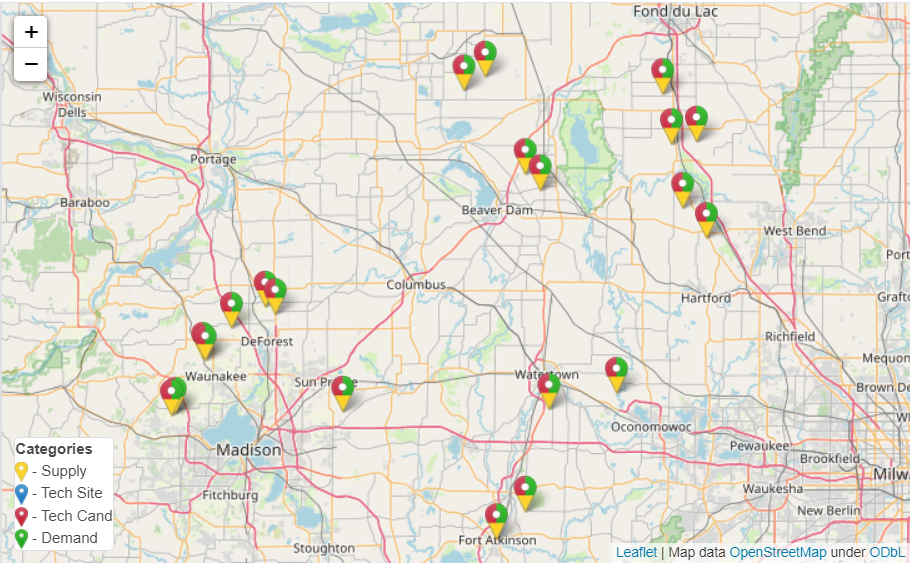
For this case study, we are exploring the effect of energy incentives on building technologies and processing waste. As the price of electricity goes up (i.e. as energy incentives increase), it will become more expensive for CAFOs to buy electricity from outside sources. Thus, they will be more inclined to build technologies to process their waste into bio-electricity.
Case 1: $0 USD/kWh
For case 1, the price of electricity is set to zero (i.e. electricity is at market price). This gives CAFOs no incentive to process their waste. As a result, no technologies are built and all of the waste gets locally applied onto the surrounding croplands.
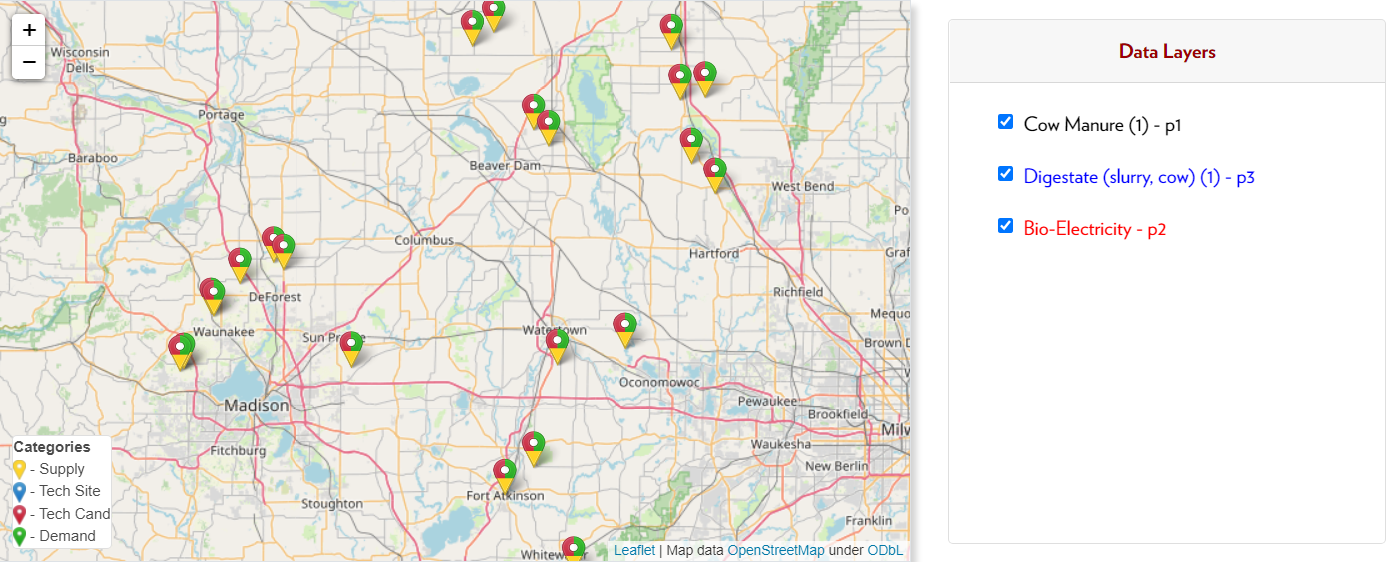
Case 2: $0.04 USD/kWh
For case 2, the energy incentive is set to $0.04 per kWh. By increasing the price of electricity, CAFOs are encouraged to install technologies so that they can process waste into electricity instead of continuing to purchase electricity from an outside source. As a result, some of the CAFOs decided that installing the technology was worth it. Surrounding farms were then able to send their waste to the sites that installed technologies.
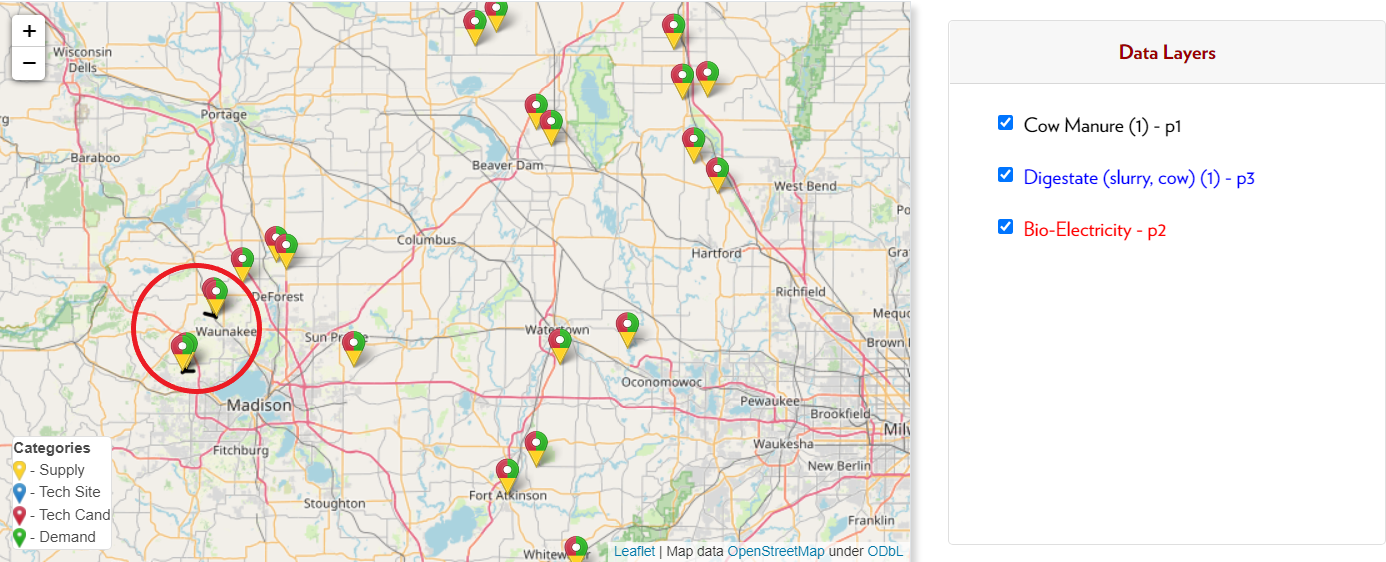
Zooming in on the red-circled area, we can see waste being transported from one node to another. From this, we can infer that the nodes receiving the waste are nodes that have technology sites installed. The nearby nodes were then able to send their waste to the existing technology site.
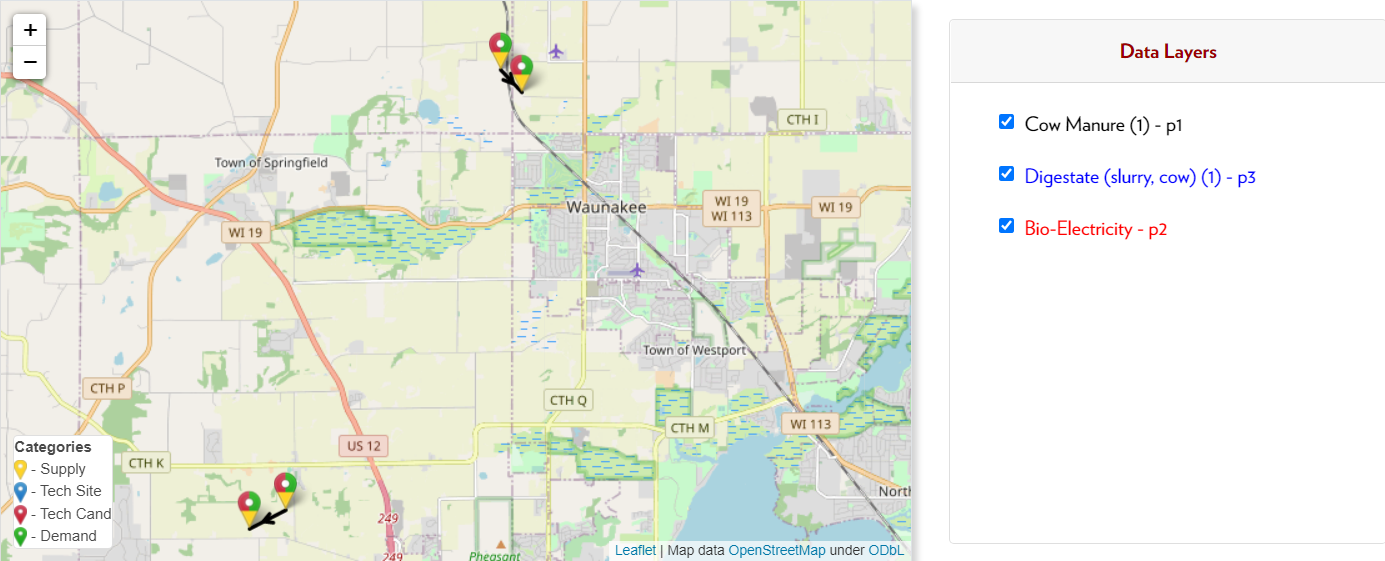
Since the energy incentives are fairly low, most farms felt that the cost of installing and operating the technologies outweighed the amount of money saved by processing the waste into bio-electricity.
Case 3: $0.10 USD/kWh
For case 3, the energy incentive is raised to $0.10 per kWh, resulting in a few more farms installing technologies. The surrounding CAFOs can then send their waste to the nearby technology site without having to build their own technology site. As a result, more waste is being processed.
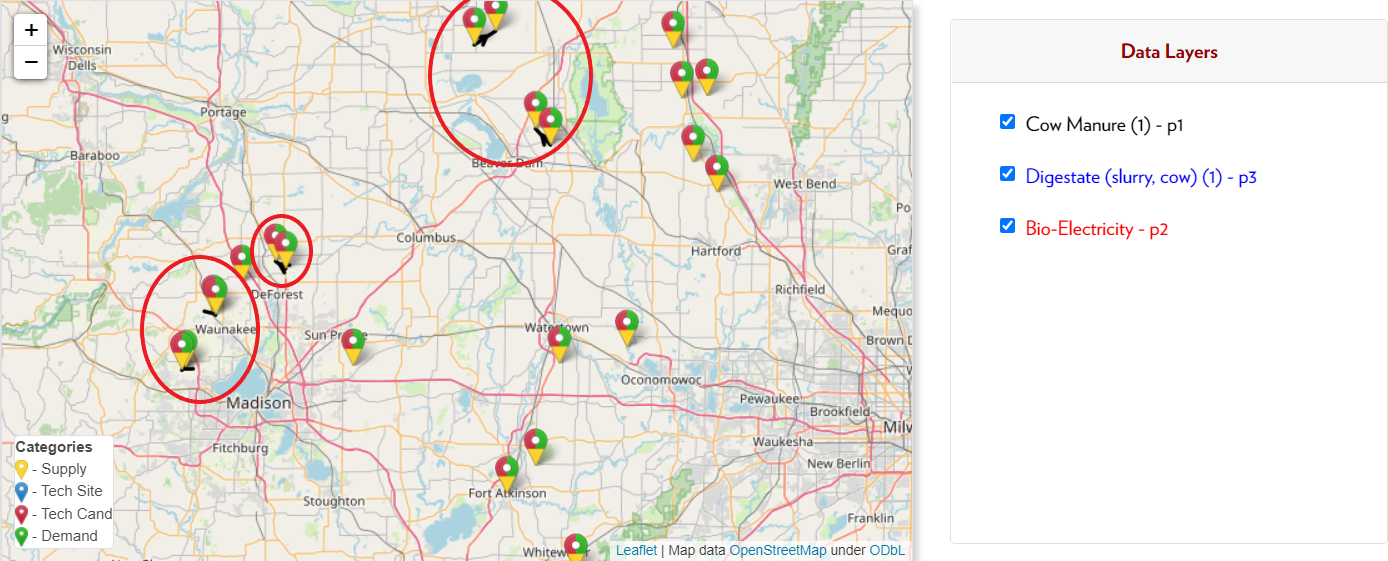
Conclusion
The waste generated from CAFOs has the potential to be converted into a useful product: bio-electricity; this will result in a much more sustainable pathway than simply disposing of the waste product. However, installing and operating the technologies for converting waste to energy is expensive. Thus, energy incentives of 0, 0.04, 0.10 USD are applied.
At market price ($0 incentives), no technologies were installed and all waste was applied to croplands. At a $0.04 incentive, at least two farms installed technologies and the surrounding farms were able to send their waste to the technology sites for processing. At $0.10 energy incentives, several more CAFOs installed technologies, and as a result, more manure was able to be processed. Even at the highest price energy incentive, there is still much less manure being processed than is being produced. This suggests that an energy incentive of $0.10 per kWh may not be enough to make a significant difference.